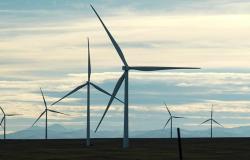The 2024 sustainable e-commerce barometer, produced by Converteo, assesses the commitment of the main online commerce players to current environmental issues. This study, based on 35 criteria covering different dimensions of sustainability, analyzes the practices of the 50 largest online sales brands in France. Here are the main conclusions of this second edition.
Climate issues: an imperative for the sector
2023 was the hottest year on record, and 2024 follows a similar trend. In this context, the e-commerce sector, a major player in the modern economy, is faced with the need to reconcile growth and reduction of its environmental impact. The sector must comply with the requirements established by the 2020 European Green Deal, including the circular economy, reducing greenhouse gas emissions and improving energy efficiency.
General results: efforts still uneven
This edition of the barometer shows that only 40% of the sustainability criteria are met on average by the players evaluated, marking a slight improvement compared to the previous year. The best performing categories relate to business model viability and marketing efforts, while consumer transparency remains very low, with only 21% of criteria met.
Transparency and eco-responsibility: a challenge for e-commerce
Only 21% of brands evaluated in the Converteo barometer are in compliance with the criteria for transparency of information on carbon footprint, sourcing and environmental certifications. Leroy Merlin, for example, is a pioneer with a marketplace where 100% of wooden products are FSC and PEFC certified, guaranteeing sustainable forest management. This transparency allows consumers to better understand the impact of their purchases.
Adoption of the circular economy: a strong point for leaders
The top ten brands stand out for their efforts in favor of the circular economy. 86% of them offer recovery services for old products, thus reducing the consumption of new resources. In comparison, only 42% of other brands offer this service. Distributors with physical stores, such as Fnac, have an advantage in terms of logistics for collecting old devices.
Supply chain challenges
The supply chain constitutes one of the critical points for reducing environmental impact. The barometer indicates a decline in the express delivery offer, partly due to the increase in its costs. Furthermore, delivery to relay points remains a key option for minimizing CO2 emissions. However, a drop in the use of click and collect is observed, due to the increase in pure players who do not have physical collection points.
Labels and sourcing practices that inspire confidence
Environmental labels are put forward by some leaders. The Leroy Merlin “Home Index” rates each product according to its environmental and social impact. This type of score, based on transparent data, is on the rise this year, with more companies like ManoMano using carbon scores to compare similar products.
Transparency efforts: still much to do
Transparency on the environmental impact of products remains a weak point in the sector. Marketplaces, present among the most popular brands, are particularly criticized for the lack of details provided on their third-party partners. However, some brands are leading by example, such as Leroy Merlin, whose marketplace is now 100% FSC and PEFC certified for products containing wood.
After “greenwashing”, “greenhushing”?
Greenwashing: a risk for brands and consumers
Conversely, other players are amplifying their ecological efforts without providing concrete evidence or without certifications, generating doubts among consumers. This confusion is amplified with sometimes opaque sourcing practices or unclear labels. Faced with increasingly informed consumers, brands must review their communication or risk losing their credibility.
Follow-up and commitments: leaders show the way
The best-ranked brands, such as Leroy Merlin and Fnac-Darty, publish detailed data on their CO2 emissions and their energy mix. They also stand out for their participation in initiatives such as the Charter of Commitments for reducing the environmental impact of online commerce and the ACT (Assessing low Carbon Transition) approach. These efforts aim to align their objectives with the Paris agreements and improve their compliance with new European regulations.
What are the challenges for the future?
Faced with increasing European legal requirements, it is essential that brands strengthen their responsible communication. Sustainability cannot be a simple marketing argument, but a sincere and measurable commitment to meeting consumer expectations. The 2024 barometer highlights the importance of transparency, the adoption of the circular economy, and the implementation of greener logistics. Companies must strengthen their communication practices, not only to meet the demands of consumers who are increasingly aware of environmental issues, but also to prevent any risk of sanctions under new regulations. The road to sustainable e-commerce is still long, but the efforts of leaders show that it is possible to reconcile growth and sustainability.






